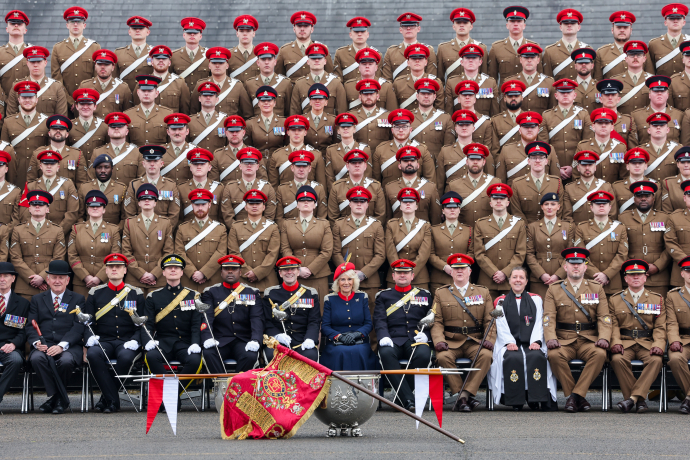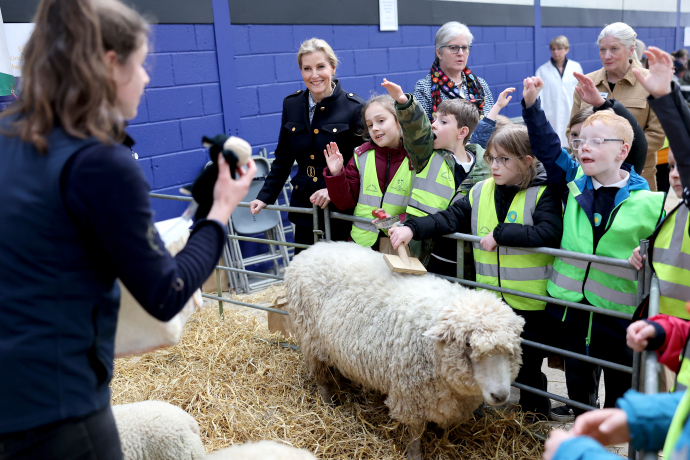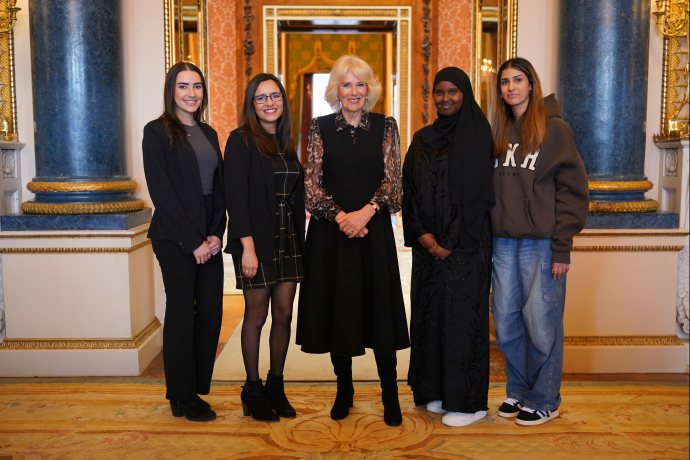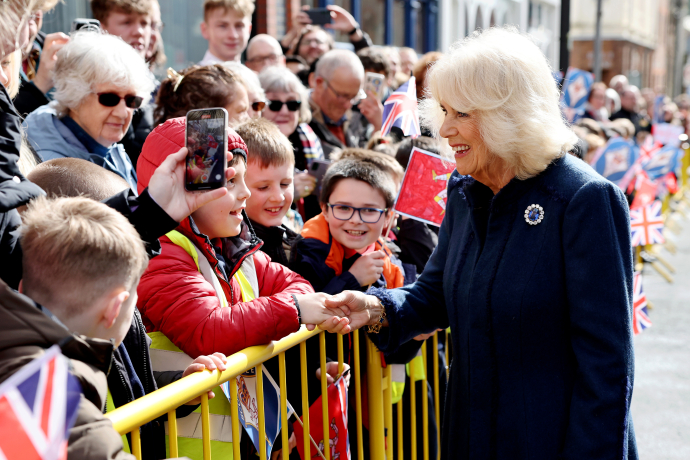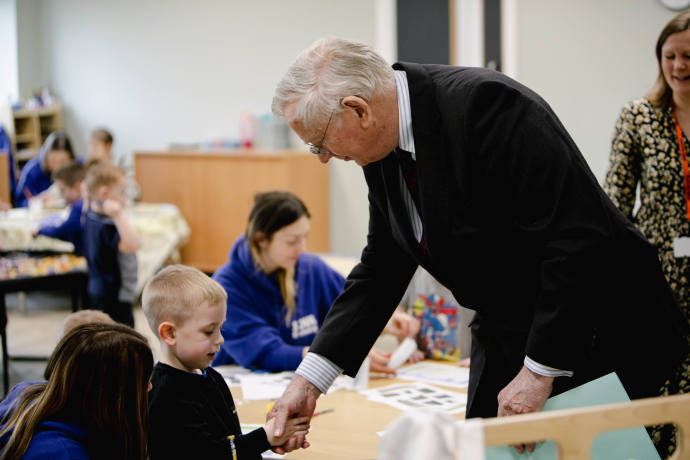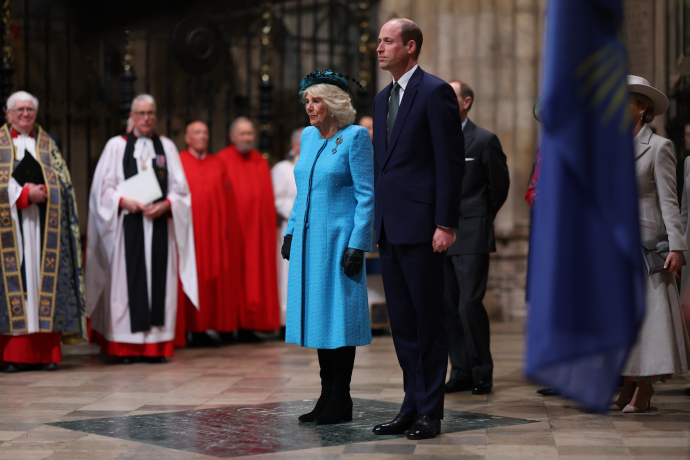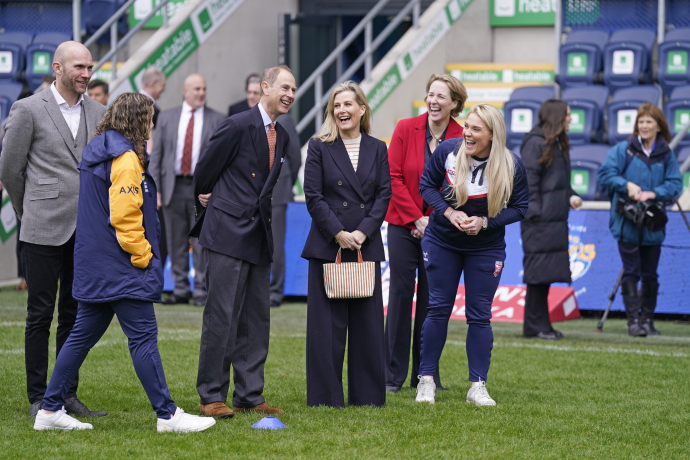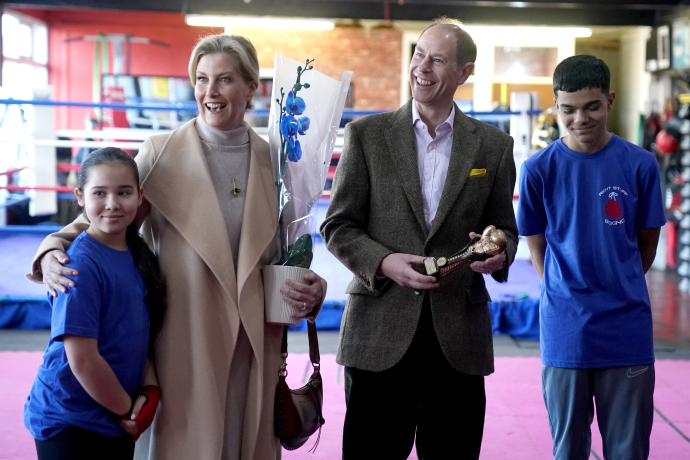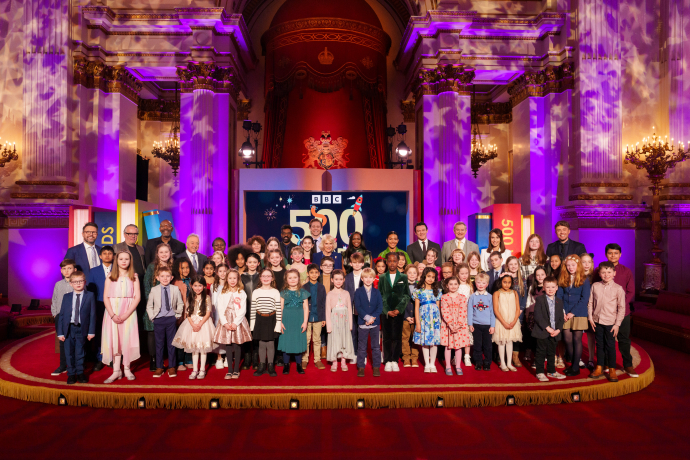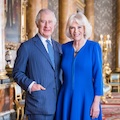Her Majesty's Body Guard of the Honourable Corps of Gentlemen at Arms provides a bodyguard to The Queen at many ceremonial occasions.
Members attend the Sovereign at State arrivals of foreign Heads of State, the Garter service at Windsor, the State Opening of Parliament, and the evening reception held by the Sovereign for the Diplomatic Corps.
In addition, the Corps is on duty when the Sovereign attends services of the Orders of Chivalry. The Gentlemen at Arms also attend The Queen's garden parties, where their task is to form the lanes through which the members of the Royal Family walk.
The Honourable Corps consists of five Officers (the Captain, the Lieutenant, the Standard Bearer, the Clerk of the Cheque and the Harbinger) and 27 Gentlemen. The senior Officer is the Captain, a political appointment who is now always the Government Chief Whip in the House of Lords.
The uniform is that of a Heavy Dragoon Guards officer of the 1840s. It has a skirted red coat with Garter blue velvet cuffs and facings embroidered with the Tudor royal badge of the Portcullis. Helmets with white swan feather plumes are worn when on duty, even in church.
Officers wear gold aiguillettes and carry sticks of office which they receive from the Sovereign on appointment. Cavalry swords are worn, and long ceremonial battle-axes, over 300 years old, are carried by all the Gentlemen.
Since 1856, when the award was instituted, twelve Gentlemen at Arms have been holders of the Victoria Cross, the highest award for gallantry and conspicuous bravery in the field.
The Honourable Corps of Gentlemen at Arms was instituted by King Henry VIII in 1509 and celebrated its 500th anniversary on 2009. At a parade and luncheon to mark the anniversary, The Queen paid tribute to her 'nearest guard':
'The evils against which the Sovereign required protection in 1509 have I expect changed a little over the years but the loyalty of the Body Guard remains undimmed.'
The band's original role was to provide a mounted escort, armed with spear and lance, to protect the Sovereign in battle or on progress around the country.
After 1526 the Corps began to do duty at court on foot, carrying a battle-axe, as they still do today.
The Gentlemen at Arms last acted as a Royal bodyguard in battle in the Civil War of 1642-9.


